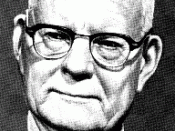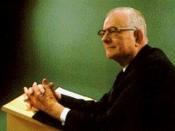W. Edwards Deming, the quality control expert, wrote a very interesting book in the 1950s, entitled Out of the Crisis. In this book, Deming wrote a formula to show how quality improvement results in a chain reaction:
Improve quality>>costs decrease (less rework, fewer delays)>>productivity improves>>capture the market with better quality and lower prices>>stay in business>>provide jobs and more jobs.
Now, 50 years later, this formula is still very applicable to any successful corporation in the United States. According to the article, Deming's writings and the 2000 revisions of the ISO 9000 standards have ten common elements:
(1) Communicate the importance of meeting customer requirements.
(2) Develop an integrated overall plan.
(3) Ensure that quality starts at the design stage to prevent problems.
(4) Monitor process capability.
(5) Measure key product and service characteristics.
(6) Continually improve processes.
(7) Create constancy of purpose.
(8) Demonstrate leadership. Work on the system to support the employees.
(9) Commit to ongoing training.
(10) Promote continual improvement rather than management by numbers.
The main theme of this article is how certain parts of the 2000 revisions to the ISO 9000 standards restate information that Deming wrote in the 1950s. After reading the article, I was amazed by how relevant Deming's work is to modern business practices. One example of this according to the article is that Deming wrote that quality must be built in at the design stage. ISO 9001:2000 now places more emphasis on up-front quality planning because an organization can have the most influence on product quality during the planning stage. Deming said the central challenge of management is to better understand the meaning of variation and the processes being managed. Quality is about effective process management. ISO 9001 now incorporates the measuring and monitoring of the product, process and quality system.


